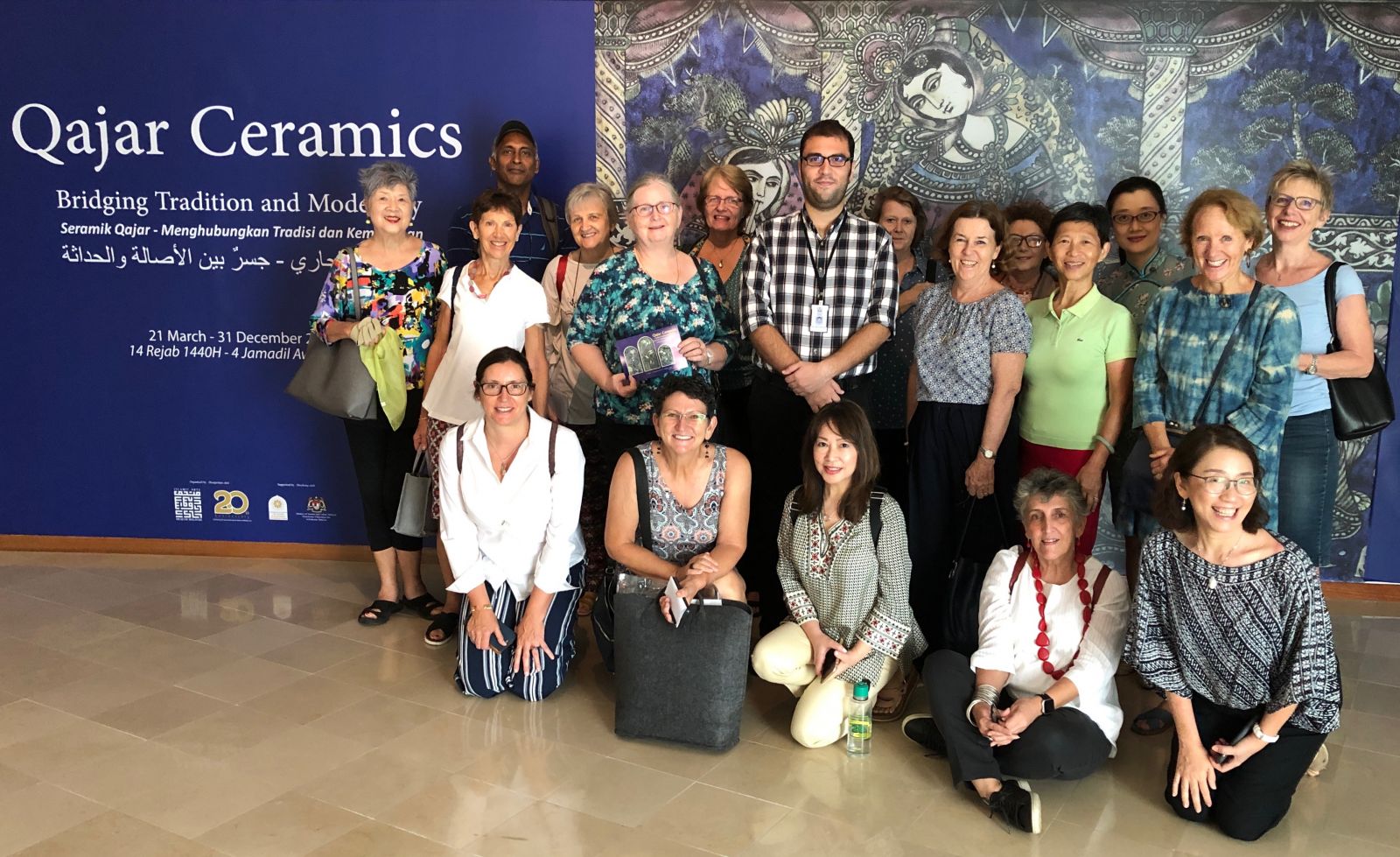|
A CURATOR GUIDED TOUR OF QAJAR CERAMICS
Venue: Islamic Arts Museum Malaysia, Jalan Lembah Perdana, 50480 KL
Date: August 21, 2019
|
|||
 |
|||
|
From the official promotion material: Qajar Ceramics Bridging Tradition and Modernity Qajar Ceramics – Bridging Tradition and Modernity is about an artistic transition, featuring diversity of ceramic objects from the collection of the Islamic Arts Museum Malaysia. The exhibition offers a closer look at the distinctive characteristics of Qajar ceramics, highlighting their forms, aesthetics, and themes. These objects point us to a story of vigour and resilience behind the Persian artistic expression. The rarely-explored field of Qajar ceramics typifies the development of the dynasty's own language and vitality, reflecting the rich energy of the time.
We were honoured to have the curator, Mr. Amin from Zerbaijan, to give us a guided tour of this special exhibition.
Mr. Amin began by giving us an overview of the Qajar Dynasty, a royal dynasty of Turkic origin, that ran from 1785 to 1925. It was interesting to note that after the first three of the dynasty's seven rulers, the appearance of the kings changed to a more modern style – gone were the long beards and traditional clothing, and in their place we saw more European style moustaches and modern outfits. Hence the “Bridging Tradition to Modernity” as the dynasty rulers moved towards a more modern era.
|
|||
 |
|||
 |
The rulers aimed to produce more modern ceramics and sell them in Europe. The ceramics on show at the exhibition are primarily the lower quality products made for the European market. The high quality ceramics were kept in the Qajar Court and today can be viewed in museums in Iran. |
 |
|
 |
The ceramics are fired, painted and then glazed. As the cultural colour of Iran, blue is the predominant colour in the exhibits. Unusually many have a 3D effect with raised sections. |
 |
|
|
Many pieces depict human forms not typically seen in Islamic art. Apart from human forms, the ceramics also include floral motifs - animal motifs are also prevalent. A leisure theme is also apparent in many of the pieces where they depict scenes of dancing figures, hunting scenes and men and women playing traditional Persian musical instruments.
|
|||
 |
 |
 |
|
 |
 |
||
 |
This piece depicts the story of a Sheikh from the region who moved to Mecca, but then met an Italian woman, fell in love, moved to Rome and converted to Christianity. |
||
 |
During the 19th century, Persia took part in world fairs in Europe with the aim of selling the ceramics made for that market. The first exposition where the ceramics were exhibited was in 1851 at the Crystal Palace in London, UK. |
||
 |
Our thanks to Mr. Amin for taking the time to walk us through this exhibit and explain the background to Qajar Ceramics.
|
||
 |
 |
||
|
If you missed this tour and are interested to view the exhibit, it is running until December 31, 2019 at Special Gallery 2 in the Islamic Arts Museum Malaysia.
Write up – Yvonne Russell Photos – Yvonne Russell & Michelle Pease |
|||




